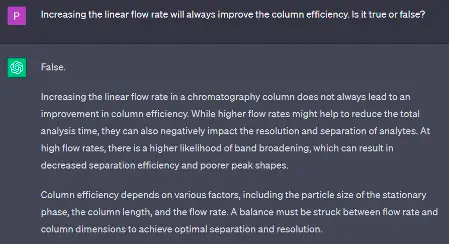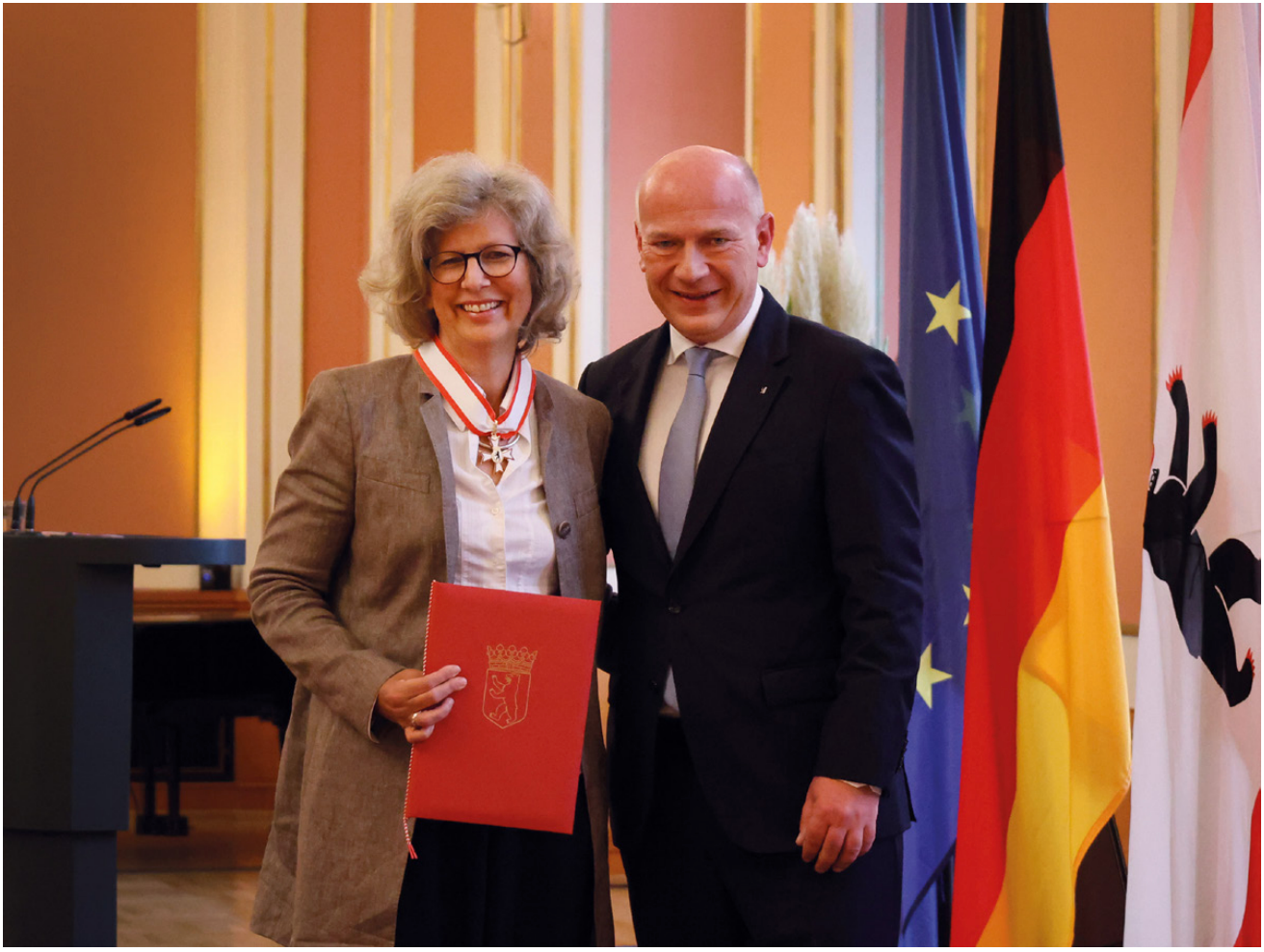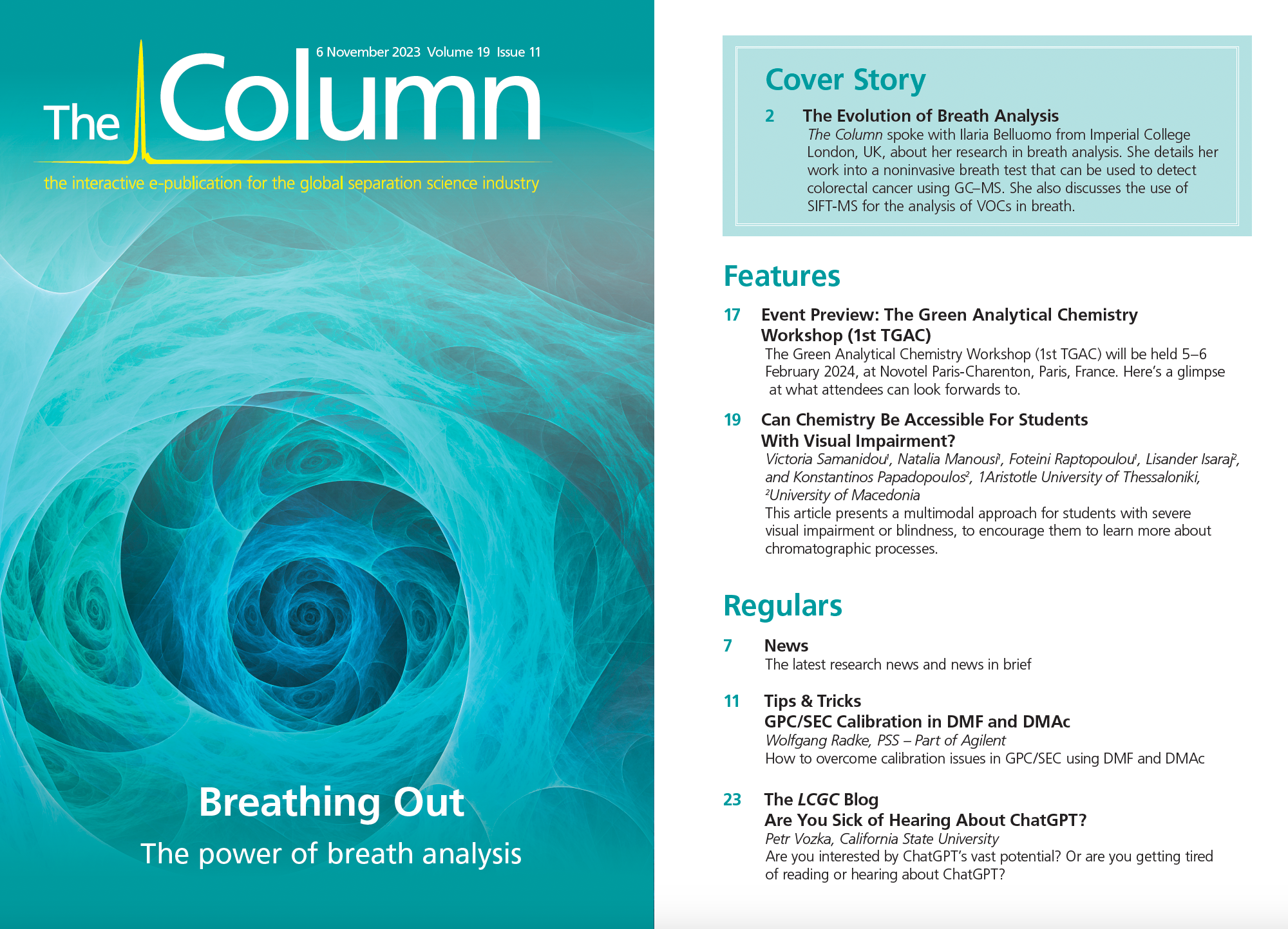LCGC Blog: Are You Sick of Hearing About ChatGPT?
Are you interested by ChatGPT’s vast potential? Or are you getting tired of reading or hearing about ChatGPT? If the latter, this blog post might give you some tips and tricks on taking advantage of ChatGPT while avoiding its application beyond its intended scope.
Robot typing on a typewriter. Artifical intelligence, chatbots, generated text concept. VEctor illustration. | Image Credit: © Moor Studio - stock.adobe.com

ChatGPT is a language model developed by OpenAI, designed to understand and generate human-like text based on the input it receives. ChatGPT does not predict the future, solve highly technical chromatographic problems, or troubleshoot an instrument for you. So, what can ChatGPT do, and why is the entire world talking about it?
I first want to mention that I am not an AI expert (nor blogger), but rather someone who loves separations, gas chromatography (GC), and anything that could simplify academic work. I believe ChatGPT is such a tool; however, it is sometimes misunderstood for something that it is not. Allow me to share my story with ChatGPT and some of its intriguing “tricks” with you.
In January 2023, just two months after the public release of ChatGPT, I was travelling to the 14th Multidimensional Chromatography Workshop in Liege, Belgium, all the way from Los Angeles, USA (true story). Amid a longer layover, I decided to give ChatGPT a try. The initial requirement was to complete registration, and that’s precisely where my journey took a pause. Tired of repeatedly entering my information and fabricating fake email addresses, I often encountered rapid responses like, “This email address (poopitypoo@gmail.com) does not exist”. Their efficiency left me intrigued. This marked my initial, almost comical first encounter with ChatGPT.
Following an enjoyable conference experience, I made my way back, engaging with my students and prompting them to embark on a paper-writing endeavour. Our starting point was the creation of a paper outline. Concluding the meeting, I strolled to my office (a 90-second walk), receiving a text from my students along the way:

In no time, the outline landed in my inbox. And at that point, I finished the registration and started exploring ChatGPT’s capabilities. And if you’re wondering why, simply see below: the ChatGPT-generated outline (achieved in under 90 seconds) with the outline I had envisioned (added parts are marked in italics and omitted parts with underlines).

I. Introduction
A. Brief overview of the importance of olefin quantification in gas chromatography fuels made from plastic waste
B. Introduction of two dimensional gas chromatography (GCXGC) and flame ionization detector (FID)
II. Method Development
A. Selection of column dimensions and stationary phases
B. Optimization of GCXGC parameters such as modulation time and flow rate
C. Determination of optimum temperature programs for each column
E. Development of calibration standards using olefinic compounds and saturated hydrocarbons
F. Comparison of FID response factors for olefins and saturated hydrocarbons
G. Derivatization techniques for improving olefin detection and quantification
H. Normalization of chromatograms and calculations
III. Results and Discussion
A. Evaluation of the developed method for olefin detection and quantification
B. Comparison of the developed method with existing GC methods ASTM-approved methods
C. Discussion of the advantages and limitations of the developed method
D. GCxGC method linearity
IV. Conclusion
A. Summary of the key findings of the study
B. Implications of the developed method for olefin quantification in various industries
C. Future directions for further improvements of the developed method.
So, that isn’t bad, is it? It’s important to note that ChatGPT may not always provide accurate or reliable information, and its responses are based on patterns it has learned from its training data. It can sometimes generate plausible-sounding yet incorrect or nonsensical answers, so critical thinking is advised when using its outputs. This aspect becomes particularly evident when ChatGPT is prompted to provide reference suggestions, as the references it generates are mostly made up but sound plausible due to ChatGPT’s lack of direct access to external databases.

Here are a few examples generated by ChatGPT:
(1) Marriott, P. J., & Shellie, R. (2002). Comprehensive two-dimensional gas chromatography–a review. Journal of Chromatography A, 965(1-2), 175-195.
(2) Phillips, J. B., Harada, R. M., & Reichenbacher, K. (2011). Performance of a two-dimensional gas chromatography system with a nonpolar–polar column combination for the separation of compounds in gasoline and diesel fuels. Journal of Chromatography A, 1218(28), 4391-4397.
Unfortunately, these publications do not exist; however, if they were, we would definitely want to include them in our manuscript.
In a similar manner, ChatGPT can assist you in preparing the structure for the introduction. Another useful tool is to ask ChatGPT to condense your abstract if you need to meet a word count requirement. If the abstract generated by ChatGPT turns out to be too short or long, you can continue with the instructions and direct ChatGPT to extend or shorten it. Alternatively, if you find yourself pressed for time and unable to read an entire paper, you can request ChatGPT to provide a summary of the results for you.
Since English is not my native language, I often use ChatGPT to check my grammar and even to rewrite, polish, or paraphrase certain paragraphs. For example, each paragraph presented here has been reviewed by ChatGPT. (Here is a helpful tip: copy and paste each paragraph individually before proceeding to the next one.) You might even move this one step forward and generate a paragraph.

“Using ChatGPT responsibly within academia involves a balanced approach that harnesses its advantages while upholding scholarly principles. Remember, ChatGPT is a tool, not a replacement for critical thinking or original research. To optimize its utility, define the specific aid you need, whether refining language or idea generation. Employ focused and evolving prompts to elicit accurate responses, cross-referencing its suggestions with reliable sources and experts to ensure credibility. While ChatGPT enhances your work, avoid overdependence by using it as a supplementary resource rather than a primary creator. Uphold ethical standards by transparently acknowledging ChatGPT’s contributions in your work. By adhering to these practices, a symbiotic relationship between AI technology and academia can be nurtured, fostering responsible and effective integration.” – ChatGPT, 2023
No, there’s no need to say “please.” I just prefer to be polite, just in case ChatGPT becomes Skynet from The Terminator movies one day.
You might come across a rumour suggesting that ChatGPT can answer questions from MIT exams, leading to the assertion that AI could potentially earn a university degree from such esteemed institutions. This was later refuted by several studies, with the conclusion that ChatGPT is indeed not capable of obtaining a degree from MIT. However, ChatGPT can answer simpler questions in a very efficient way. During the COVID-19 pandemic, many universities switched to remote teaching, which included remote student exams. Since students were capable of consistently finding methods to search for answers online despite the exams not being open-book format, one solution was to implement essay-type or true/false questions. However, these are no longer viable options, as ChatGPT can solve these general questions without the need for students to gather information from several sources and writing the summary in their own words (see below).


An example of an essay-type question to support my argument could be: “Briefly describe how a TOF mass analyzer works, based on the relationship between flight time (t), mass-to-charge ratio (m/z), and electric field (E)”. I haven’t included the answer here, but you can give it a try yourself. As more and more students are using ChatGPT, professors will have to adapt as well.
So, what is the conclusion if there is one at all? Up until now, ChatGPT has remained ad-free and freely accessible, a rarity in my view. So, why not take advantage of it? Just keep in mind that ChatGPT is “only” proficient in a diverse array of natural language processing tasks, encompassing but not limited to: generating text (offering coherent and contextually relevant content based on given prompts, thus facilitating the creation of articles, blogs, poems, and more), completing text (forming sentences or paragraphs, serving as a valuable tool for brainstorming, writing prompts, and content generation), summarizing text (concisely condensing lengthy passages while retaining essential information), translating languages, extracting data (retrieving structured data from unstructured text), and much more.
About the Author
Petr Vozka is an assistant professor of analytical chemistry in the Department of Chemistry and Biochemistry at the California State University, Los Angeles, USA. He is also the director of the Complex Chemical Composition Analysis Lab (C3 AL). His research focuses on characterizing complex chemical mixtures using state‑of‑the-art techniques, such as GC×GC and high‑resolution mass spectrometry (HRMS). His primary focus is on developing methods for analyzing products from plastic waste conversion processes and organic compounds adsorbed on microplastics. He has one patent, six military reports, 25 journal publications, and over 30 research presentations, which include 10 invited lectures and invited presentations. He was invited as a keynote speaker to the 14th Multidimensional Chromatography Workshop in 2023.

Rethinking Chromatography Workflows with AI and Machine Learning
April 1st 2025Interest in applying artificial intelligence (AI) and machine learning (ML) to chromatography is greater than ever. In this article, we discuss data-related barriers to accomplishing this goal and how rethinking chromatography data systems can overcome them.
Study Examines Impact of Zwitterionic Liquid Structures on Volatile Carboxylic Acid Separation in GC
March 28th 2025Iowa State University researchers evaluated imidazolium-based ZILs with sulfonate and triflimide anions to understand the influence of ZILs’ chemical structures on polar analyte separation.
















